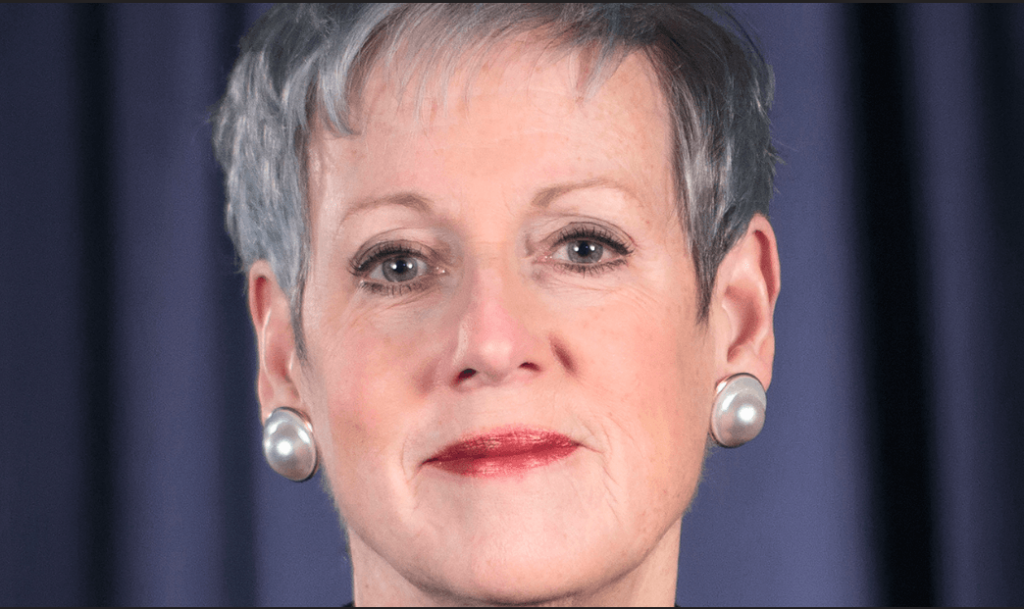There have been any number of “firsts” for Chief Justice Maureen O’Connor throughout her 36-year career, but recognition for being the first female in any particular post is not how she wants to be remembered. Her crusades for court reforms, changes to judicial election procedures and implementing technology are just a few of the causes she finds more significant than the fact that she’s a woman.
In fact, despite the era (one that was still relatively new to women’s equality), O’Connor says she never experienced any apparent prejudice or partiality toward her male counterparts.
Receiving her Juris Doctor from Cleveland-Marshall College of Law in 1980, O’Connor began practicing in Summit County, Ohio in 1981. A scant four years later, she was appointed a magistrate of the Summit County Probate Court. It was just the beginning of the proverbial fast-track.
“Essentially, I hung out a shingle and started taking anything that walked through the door,” she says. “That meant I had a lot of criminal and juvenile appointments. I was also getting regular work from the courts, and I never felt that men were getting better cases than I was. It always seemed to be a pretty equal system. And then, I was asked to apply to be a magistrate in probate court. I had done some probate work and I guess they liked how I’d represented myself and case successes, so I was hired. flat could have just as easily gone to a man, so I felt that too was pretty even.”
NOT A FAIRY TALE
Today, her name is virtually synonymous with law, but contrary to what many might surmise, O’Connor did not foster a lifelong ambition of becoming an attorney. Her first calling was to teach, and after earning her bachelor’s degree from Seton Hill University, was intent on pursuing a master’s degree in education. However, after sampling the classroom experience and embarking on the graduate program, O’Connor came to the realization that teaching was not, after all, what she was “cut out for.”
“Thousands of students have benefitted from that decision,” she quips with a grin.
She admits there was no great epiphany, but rather a gradual recognition of her true passion. It was during what O’Connor describes as her “bumming around period” that she gravitated to the law.
“I was substitute teaching during the day and waitressing at night,” she explains. “I was just saving my money while I decided what I wanted to do when I grew up.”
The law and politics had always held a fascination for her, and during this period those thoughts resurfaced at the forefront.
“I took a look at my bank account and thought, ‘OK, I’m either going to go to law school or take this money and bum around Europe for as long as it lasts’,” says O’Connor. “I applied to one law school, and was accepted. So, I never got to bum around Europe.”
As cavalier as that may sound, it was a decision O’Connor has never regret. She’s fully embraced and enjoyed every step, though with special circumstances that made law school a bit more challenging. O’Connor was balancing student life with being a newlywed and first-time mommy. By the time she donned her cap and gown again, she was the mother of two. She insists, however, that rather than detract from her studies, her growing family was a blessing, and certainly did not slow her career.
CAREER MOMENTUM
Serving as probate magistrate seemed to set the momentum for her quickly rising career. O’Connor was elected as a judge of the Summit County Court of Common Pleas, serving on the bench from 1993 to 1995. Then, in 1994, she was elected to the office of Summit County prosecutor; and, in 1998, she was elected lieutenant governor – the second-highest official in the state. She became the governor’s chief adviser on criminal justice issues, serving as director of the Ohio Department of Public Safety, and as chair of Ohio’s Security Task Force and the State Building Security Review Committee.
“Attorney prosecutor was one of the best jobs that I’ve had,” she says, “but being a trial judge was equally exciting, and my current position is very interesting as well. The common thread in these positions is public service and using your law degree in the public service arena. Helping people solve or resolve problems that they couldn’t otherwise do on their own, is incredibly rewarding.”
It’s been a direct and rapid ascent to bigger, more important positions with increasing responsibilities for O’Connor. First elected to the Ohio Supreme Court in November 2002, she made history in 2010, when elected to the position of chief justice – the first woman to ever hold this prestigious and influential post. Reelected in 2016, she’s currently serving this six-year term. And, most recently, was elected first vice president of the Conference of Chief Justices.
Chief Justice O’Connor has served on some of the most important (and sometimes controversial) task force committees and pursued an extensive agenda for strengthening the third branch of Ohio government in a number of key areas including: debtor’s prisons, grand juries, access to justice, judicial elections, CLE reform and, the death penalty.
“The trick is bringing the right people into the room, giving them the task at hand and let them come up with recommendations,” she says. “I don’t have a very heavy hand, but rather get the best minds access to the evidence and accepted research and then let them listen to everyone’s point of view. You have to make sure it’s a very equitable process and everyone gets an opportunity to contribute.”
Despite all these imposing responsibilities, O’Connor says the most challenging aspect of a judicial career is running for office.
“The challenge is to maintain your credibility and integrity in light of the fact that you have an election system,” she says. “The real challenge is trying to excite people, interest them in the judiciary race.”
In response to this, she says, they have come up with an innovative tool to generate interest and educate voters. Judicial-VotesCount.org is an interactive website designed to inform and educate.
“Unfortunately,” she adds, “lacking a budget for advertising and promoting the site, we have to rely on word of mouth.”
OUT OF THE SPOTLIGHT
With seven grandchildren aged 5 and under, O’Connor says she enjoys playing grandma. Her downtime hours are also spent reading, traveling with family and friends, and fly-fishing.
Even with such an extensive and impressive resume and varied experiences, O’Connor doesn’t hesitate in response to the question, “What are you most proud of in your career?”
“It goes back to what motivates me in everything I do,” she says. “Making decisions that are meaningful and helpful for the public at large in the job that I do now, and previously, when I was a magistrate, trial judge and prosecuting attorney, making decisions that actually helped people one case at a time.”










